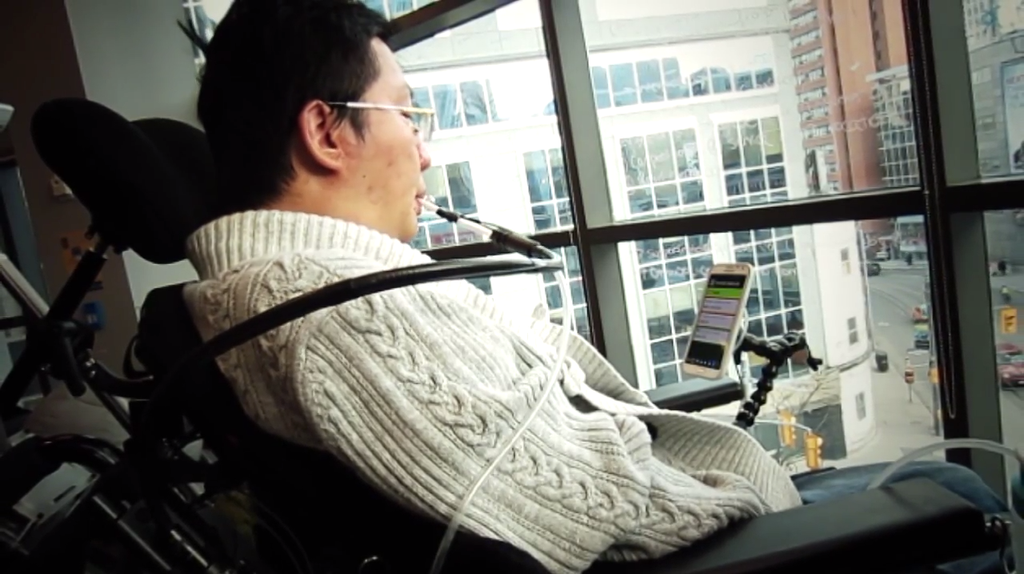An adaptive switch is an input-output device that allows the individuals with physical disabilities user to independently activate assistive technology devices and switch-enabled devices such as an iPhone. Choosing the right adaptive switch can have many factors, including preference, dexterity, and whether the user is looking for the tool for when they are out and about or while laying in bed before sleeping. The proper switch will open up a world of access to communication devices, environmental controls, computer software, and mobile devices.
Here are 6 common adaptive switches/input devices that unlock a world of independence for individuals with physical disabilities:
1. Joystick

The most common power chair driving control and input device is a joystick, which is mounted on the end of the armrest.
The joystick can activate four different devices depending on the direction the switch is moved. For example, if the user moves the switch to the left it will activate one device, moving it backward will activate another and so forth. When connected to tecla-e, momentarily holding the joystick in different directions will allow you to quickly switch between Bluetooth-enabled smart devices. For example, lightly pressing the joystick forward will give you hands-free access to your smartphone, pressing right will give access to your tablet, pressing down will turn on or off your Philips Hue light and pressing left will give access to your Smart TV.
2. Buddy Button
The Buddy Button by Ablenet is a wired switch featuring a round activation surface used to send commands to your Tecla. It provides an auditory "click" and tactile feedback to inform you that the button has been pressed.
The Buddy Button is great for controlling devices with hand, arm, or head movement. Multiple Buddy Buttons can be used to customize the control of your device even further. Just watch Tecla user Christopher Hills to get inspired!
3. Ultimate Switch
Designed for use by even the most profoundly physically or neurologically challenged individuals. The Ultimate Switch is super versatile, multifunctional and durable. It's ball end wobble switches are strong enough to withstand heavy use, yet sensitive enough to respond to even the slightest touch. This truly is the ultimate in switch technology!
Easy to mount for use in bed or wheelchair with a clamp and 19" gooseneck
4. Micro Light Switch
The Ablenet Micro Light Switch features a small activation surface and only requires a light touch to activate. The Micro Light Switch provides both auditory "click" and tactile feedback upon activation.
The Micro Light Switch is perfect for use for those with limited hand or finger movement, or for use with slight shoulder or neck motion.
Read about Tecla user Maggie to see how the Micro Light Switch works for her!
5. Pillow Switch

The Ablenet Pillow Switch features a soft foam activation surface. Like our other switches, the Pillow Switch provides an auditory "click" and tactile feedback.
This switch is perfect for use in bed or in a wheelchair. The Pillow Switch can be used with hands, arms, shoulders or head.
6. Sip-and-Puff Switch
The Sip-and-Puff Switch is activated with either a "sip" or a "puff" of the mouth with the included small mouthpiece. Perfect for those with little to no neck movement, or addition to other switches for customized control.
Related Articles:
- 9 Surprising Things Quadriplegics can do with an iPhone or iPad
- iPhone and iPad accessibility options for quadriplegics and other users with limited mobility
- 4 Ways Quadriplegics Can Use An Ipad or iPhone
- Siri vs iOS Switch Control for hands free iPhone access
- Using iPad AAC apps with switch control for speech and motor impairments
Learn more about Tecla Shield and its successor: tecla-e!


Leave a comment: